#snake gourd curry
Text

Avial / South Indian Mixed Veggie Curry (Vegan)
#vegan#lunch#dinner#indian cuisine#avial#curry#potato#moringa#green peas#suran#yams#cucumber#snake gourd#carrots#vegan yogurt#coconut#cumin#chili#ginger#coconut oil#sea salt
14 notes
·
View notes
Text
Channa Dal And Snake Gourd Curry
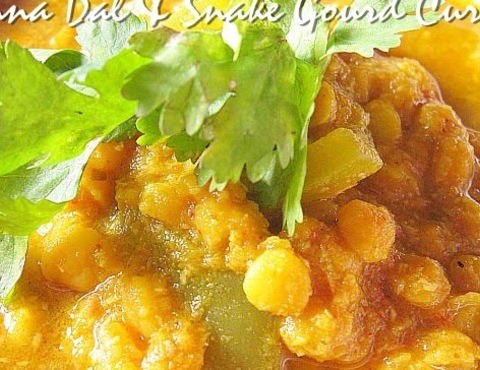
0 notes
Text
Snake Gourd Lentil curry/Pudalangai Poriyal

0 notes
Photo

PUDALANGAI FRY SNAKE GOURD CURRY RECIPE
0 notes
Text
Anyway that is a plate of rice with mutton curry and some stir fried ball eggplant, long beans and snake gourd
2 notes
·
View notes
Text
Seasonal Vegetables to Buy Online in Chennai: A Month-by-Month Guide

Navigating the vibrant markets of Chennai can be an exhilarating experience, but sometimes convenience takes precedence. For those who prefer the ease of online shopping, knowing which vegetables are in season can ensure that you get the freshest and most flavorful produce. This comprehensive month-by-month guide will help you make informed choices about the seasonal vegetables to Buy Fresh vegetables online.
January: A Fresh Start to the Year
Carrots and Beets
January is the perfect time to indulge in root vegetables. Carrots and beets are at their peak, offering a sweet and earthy flavor ideal for soups, stews, and salads.
Cauliflower
Versatile and nutritious, cauliflower is abundant in January. Use it in curries, roasted dishes, or even as a low-carb alternative to rice.
Green Peas
Fresh green peas are a seasonal delight in January. They add a sweet crunch to any dish and are excellent in pulao, parathas, and stir-fries.
February: Embrace the Cool
Spinach
Rich in iron and vitamins, spinach thrives in February's cooler climate. Perfect for palak paneer, spinach salads, and smoothies.
Radishes
Crisp and slightly spicy, radishes add a refreshing crunch to salads and pickles. February's radishes are particularly vibrant and flavorful.
Tomatoes
Though available year-round, tomatoes are especially juicy and flavorful in February. Use them in gravies, sauces, or simply as a salad ingredient.
March: The Transition Month
Cabbage
Cabbage is plentiful in March. Its crunchiness and mild flavor make it perfect for stir-fries, salads, and Indian curries.
Sweet Potatoes
A nutritious and sweet option, sweet potatoes are great for baking, frying, or adding to curries. Their versatility makes them a March favorite.
Capsicum
Also known as bell peppers, capsicums add color and a slight sweetness to your dishes. March is the best time to enjoy them fresh and crisp.
April: Warmer Days Ahead
Cucumbers
As temperatures rise, cucumbers offer a hydrating and cooling effect. Perfect for salads, raitas, and as a snack.
Pumpkin
Pumpkin is versatile and nutritious, ideal for soups, curries, and desserts. April's pumpkins are tender and full of flavor.
Bottle Gourd
Also known as lauki, bottle gourd is perfect for summer. It is light, nutritious, and can be used in soups, curries, and desserts.
May: Peak Summer Produce
Bitter Gourd
Despite its bitterness, bitter gourd is highly nutritious and popular in Indian cuisine. May offers the freshest produce, ideal for stir-fries and pickles.
Lady’s Finger
Also known as okra or bhindi, lady's finger is perfect in curries and stir-fries. May is when they are most tender and flavorful.
Brinjal
Brinjal, or eggplant, comes in many varieties, all abundant in May. Use it in bharta, sambar, or as a grilled vegetable.
June: Monsoon Harvest
Green Beans
Green beans are crisp and versatile. They can be used in curries, salads, and stir-fries, providing a fresh crunch.
Amaranth Leaves
Nutritious and versatile, amaranth leaves are excellent in soups, stews, and stir-fries. June is when they are most tender.
Cluster Beans
Also known as guar, cluster beans are great for curries and stir-fries. June is the peak season for these beans.
July: Mid-Year Bounty
Snake Gourd
Snake gourd is perfect for light, nutritious dishes. July is the best time to enjoy it in curries, stews, and salads.
Ash Gourd
Ash gourd, or winter melon, is ideal for soups, curries, and desserts. July's produce is fresh and flavorful.
Drumsticks
Drumsticks are a popular addition to sambar and other South Indian dishes. July offers the freshest and most tender drumsticks.
August: A Rich Harvest
Yam
Yam is a nutritious root vegetable, perfect for curries and fries. August is when it is most abundant and flavorful.
Chow Chow
Also known as chayote, chow chow is excellent in curries and stews. Its mild flavor and crunchy texture are best in August.
Spinach
Spinach makes a return in August, offering fresh greens for salads, curries, and smoothies.
September: The Harvest Continues
Colocasia Leaves
Colocasia leaves are used in traditional dishes like patra. September offers the freshest leaves, perfect for cooking.
Ivy Gourd
Also known as tindora, ivy gourd is great for stir-fries and curries. September's produce is particularly fresh and tender.
Turnips
Turnips are versatile and nutritious, ideal for roasting, stews, and curries. September is when they are at their best.
October: Prepping for Festivities
Fenugreek Leaves
Fenugreek leaves add a unique flavor to dishes. October is the best time to enjoy them in curries, parathas, and salads.
Carrots
Carrots return in October, offering sweet and crunchy goodness for salads, soups, and desserts.
Radishes
Radishes are back, adding a spicy crunch to your dishes. October's radishes are fresh and flavorful.
November: Cool Season Crops
Green Peas
Green peas return in November, perfect for pulao, parathas, and salads.
Cauliflower
Cauliflower is back, versatile for curries, roasted dishes, and as a rice substitute.
Cabbage
Cabbage is abundant again, ideal for stir-fries, salads, and curries.
December: Festive Flavors
Spinach
Spinach returns, offering fresh greens for a variety of dishes.
Tomatoes
December tomatoes are juicy and flavorful, perfect for sauces, gravies, and salads.
Beets
Beets are back, adding sweetness and color to your dishes.
Conclusion
Eating seasonal online vegetable shopping in chennai is not only a delicious and nutritious choice but also a sustainable one. By following this month-by-month guide, you can ensure that you always have the freshest produce on your plate. Chennai's vibrant online market offers a plethora of options, making it easy to incorporate seasonal vegetables into your diet. Enjoy the bounty of each season and support local farmers by choosing seasonal produce.
0 notes
Text
Exploring Indian Summer Vegetables: A Guide to Freshness and Flavor
India’s rich agricultural heritage is mirrored in its diverse array of summer vegetables. As the temperatures soar, these vegetables not only provide a respite with their refreshing qualities but also pack a nutritional punch, making them staples in Indian households. Let's delve into the vibrant world of Indian summer vegetables and discover why they deserve a place in your kitchen.

The Quintessential Indian Summer Vegetables
Bottle Gourd (Lauki) Known for its high water content, bottle gourd is a cooling vegetable perfect for hot summer days. It's incredibly versatile, lending itself to a variety of dishes from simple stews to more elaborate curries. Lauki is also valued for its digestive properties and is a great addition to a health-conscious diet.
Bitter Gourd (Karela) While its bitter taste might be an acquired one, bitter gourd is celebrated for its numerous health benefits, particularly for diabetics. It can be stir-fried, stuffed, or even juiced. Despite the bitterness, karela offers a unique flavor profile that’s deeply satisfying and cooling.
Okra (Bhindi) Okra, or lady's finger, is another summer favorite. Its slimy texture can be off-putting to some, but when cooked properly, it becomes a delicious and nutritious vegetable. Bhindi is commonly used in stir-fries and curries and is appreciated for its high fiber content and rich taste.
Ridge Gourd (Turai) This slightly sweet and spongy vegetable is ideal for light, summer-friendly meals. Ridge gourd is often cooked with minimal spices to retain its natural flavor and is excellent for promoting hydration and digestion.
Snake Gourd (Chichinda) Snake gourd is a long, slender vegetable that’s often overlooked but is highly nutritious. It has a mild taste and can be used in a variety of dishes from curries to salads. It’s known for its cooling properties, making it perfect for summer diets.
Nutritional Benefits
Summer vegetables in India are not just about flavor; they are nutritional powerhouses. They are generally low in calories but high in vitamins, minerals, and antioxidants. For instance, bottle gourd is rich in Vitamin C and magnesium, while okra is a good source of Vitamin A and folate. Bitter gourd contains bioactive compounds that help regulate blood sugar levels, making it a valuable addition to any diet.
Incorporating Indian Summer Vegetables into Your Diet
The best way to enjoy these vegetables is by keeping the recipes simple to preserve their natural flavors and nutritional benefits. Here are a few tips:
Salads and Raitas: Incorporate grated or thinly sliced summer vegetables into salads or yogurt-based raitas for a refreshing side dish.
Curries and Stir-fries: Lightly spiced curries and stir-fries can make a hearty yet light meal. Use minimal oil and spices to keep it healthy.
Soups and Stews: These vegetables can be the star of light soups and stews, providing comfort and nutrition in every spoonful.
Conclusion
Indian summer vegetables are a testament to the country's agricultural diversity and culinary richness. They offer a blend of flavors and health benefits that are perfect for the hotter months. By incorporating these vegetables into your diet, you can enjoy delicious meals that keep you cool and nourished. Embrace the seasonal bounty and let these vegetables add a touch of freshness to your summer meals.
For more information and to explore a wide range of seeds for these vegetables, visit AllThatGrows. Happy gardening and cooking!
0 notes
Text
Snake Gourd: An Exotic Vegetable with a Unique Flavour and Versatile Cooking Potential
Snake gourd, sometimes known as "snake guard," is an unusual and exotic vegetable that has long been prized for its peculiar shape, mild flavour, and usefulness in the kitchen. Farzana Vegetables Wholesale in the UAE is fresh and quality, which customer’s satisfied snake guguards. Thislog will explain what snake gourd is, how to cook it, and the delicious flavour it adds to your food.
An Overview of the Snake Gourd
Snake gourd (Trichosanthes cucumerina) is a vining vine with long, slender, curved fruits that can grow to be several feet long. Its name comes from its snake-like look. The fruit has a moderate and somewhat sweet flavour that makes it popular in a variety of cuisines.
Snake Gourd Cooking Instructions
Depending on your culinary preferences, snake gourd can be prepared in a variety of ways. Here are several popular approaches:
Snake Gourd Stir-Frying: This is one of the most common ways to prepare snake gourd. Here's a quick recipe:
Thinly slice the snake gourd into round pieces.
Heat oil in a skillet and season with cumin seeds, mustard seeds, and curry leaves.
Combine the sliced snake gourd with spices such as turmeric, cumin, coriander, and red chilli powder.
Stir-fry the snake gourd until it is soft and slightly caramelised.
The end product is a delightful combination of flavours in a somewhat crispy vegetable dish.
Stuffed Snake Gourd: Stuffing snake gourd with a savoury blend of spices, coconut, and other ingredients is another delectable way to enjoy it. How to Make a Stuffed Snake Gourd
Remove the seeds by slicing the snake gourd lengthwise.
Make a stuffing out of grated coconut, roasted gramme, spices, and a tadka (seasoning) of mustard seeds, curry leaves, and red chilli.
Stuff the snake gourd with the stuffing.
Cook the stuffed snake gourd in a delicious sauce or steam it until soft and the flavours blend.
The mild taste of the snake gourd is balanced by the spiced stuffing in this dish, which delivers a unique blend of textures and flavours.
Snake Gourd Curry: In several regional cuisines, snake gourd is used to produce curries. To make a thick, creamy sauce, these curries often blend the vegetable with spices, tomatoes, and coconut milk or yoghurt.
Snake gourd curry pairs well with rice or flatbreads, and the vegetable absorbs the sauce's deep flavours.
Snake gourd is a delicious complement to your culinary experiences, with its unusual appearance and gentle, slightly sweet flavour. This adaptable vegetable may give a unique and tasty touch to your dishes whether you stir-fry it, stuff it, or make a curry. So, the next time you see snake gourd in the store, don't be afraid to explore its culinary potential and savour its unusual flavour.
#Fruits & vegetable food service supplier#Fruits wholesaler in the UAE#Vegetables Wholesale in the UAE Fruits & veggies Distributor in Dubai#Fruits & vegetables Importer in UAE#fruits & vegetables exporter in uae#fruits & veggies distributor in dubai#re-export fruits & vegetables from uae#fresh fruits suppliers dubai#fruits & vegetables supplier in the uae#vegetables wholesale in the uae
0 notes
Text

A delightful Snake Gourd Curry recipe on Plattershare! Whip up this delicious and nutritious dish, perfect for veggie lovers.
0 notes
Text
Kootu Curry | Koottukari Recipe » Dassana's Veg Recipes
Kootu curry recipe with step by step photos – kootu curry also known as koottukari or kootu kari is a thick curry based dish made with a few veggies and legumes. The veggies that are added are yam, ash gourd, carrots, snake gourd, pumpkin or plantains. The legumes added are black chickpeas (kala chana) or bengal gram (chana dal). This dish is also one of the important dishes in the grand…

View On WordPress
0 notes
Photo

Best Vegetables for Digestion in Monsoon
Monsoon is one of most favourite seasons that brings cool showers with it. Monsoon refreshes us from the summer lethargy and sweltering heat. The breezy mornings and earthy smell of the wet soil fills our heart with a sense of pure joy. Monsoon is the season of new growth and nourishment. However, monsoon also brings along an array of digestive disorders and bacterial infections that may take a toll on our health.
According to Ayurveda, digestive disorders are more common during rainy season as our metabolism becomes sluggish. This can lead to digestive problems like gases, acidity, bloating, abdominal pain, cramping, gastritis. Many bacterial diseases are caused in the rainy season. According to Ayurveda, green leafy vegetables are considered to have excess bacteria during monsoon. Hence these green leafy vegetables must be avoided during the monsoon season.
Now as the green leafy vegetables are off the table, we need to find nourishment through other vegetables. Monsoon brings variety of gourds like bottle gourd, bitter gourd, ash gourd, ridge gourd, snake gourd which are available in plenty. Other than gourds, monsoon also brings other vegetables like cucumbers, beetroot, beans and okra. Adding these vegetables in regular diet plan aids for better digestion and good gut health.
Here are some fruits and vegetables that can help to boost good digestive and overall health.
1. Bottle Gourd or Lauki
Bottle gourd is one of the best and healthiest vegetables available during this season. It is high in dietary fibres, which helps to maintain the digestive health. Aside from that, it contains iron and is high in vitamins B and C, which are known to be powerful antioxidants. The pulp of the bottle gourd keeps the stomach cool and remove excess bile from the body. Bottle gourd is also effective in fever, cough and other disorders that occur during monsoon.
It is a low-calorie vegetable, making it helpful in weight loss and sugar control. for these purpose bottle gourd juice can be consumed in the morning. Bottle gourd is healthy cuisine in the form of curry with minimal oil and spices. It can be prepared with curd as lauki ka rayta to keep the stomach light and aid digestion.
2. Bitter Gourd or Karela
Many people will feel bitter after reading this vegetable name but it is really the healthiest vegetable available. Karela or bitter gourd may not have a great taste, but it definitely has enormous health benefits especially in monsoon. Bitter gourd contains a high concentration of minerals, vitamins and antioxidants, which maintains healthy digestion.
Bitter gourd is a rich source of vitamin C to boost immunity and it also has strong antiviral properties. The bitter gourd regulates blood sugar levels, making it ideal for diabetic people. For this purpose, bitter gourd juice can be mixed with Amla juice to neutralize its bitter taste. If this bitter juice is too much for you then you can have karela ki sabzi with rice or roti.
3. Pointed Gourd or Parwal
Pointed gourd is not a very popular vegetable but it is a really healthy vegetable. These striped green vegetables have many health benefits to keep you healthy during monsoon. It is rich in, Vitamin A and C, which help in boosting the healthy digestion.
Monsoons generally make us prone to cold, cough and headaches. But pointed gourd is helpful in controlling cough, cold, headaches and other common monsoon illnesses. The vital antioxidants present in this vegetable boost the digestive system and decreases the risk of seasonal monsoon illnesses.
4. Indian Squash or Tinda
Indian squash is not only a healthy vegetable, but it is good in taste also. This vegetable has anti-inflammatory agents that boost digestive health. It also controls and prevent bloating, acidity and heart burn.
Indian squash is rich in fiber content hence it prevents bowel disorders also. If you frequently suffer from digestive issues, you must include Indian Sqash in your diet. You can try so many variations of it including curries and dry Subjis with lentils.
Also there are many herbs which boosts digestive health. herbs like Draksha, Amalki, Shunthi helps to keep digestive health strong. DIPYA syrup is the best ayurvedic digestive tonic, a safe and effective option to improve digestion from Charak Pharma. It is a single comprehensive remedy & ayurvedic medicine for gas and acidity. It also acts as best ayurvedic medicine for indigestion and gas. Amalaki in DIPYA reduces the excessive secretion of stomach acid. Shatavari increases mucosal defences while Draksha protects internal lining of stomach.
Using herbs mentioned above along with DIPYA syrup of Charak Pharma helps to confidently counterstrike digestive problems.
0 notes
Video
youtube
FARM FRESH SNAKE GOURD BEEF CURRY RECIPE গরুর মাংস দিয়ে চিচিঙ্গার সবথেকে...
#youtube#farm fresh#village food#snake gourd beef curry recipe#snake gourd cultivation#snake gourd harvesting and cooking
1 note
·
View note
Text
Food I Eat
We are what we eat. I eat Sattvik (vegetarian) food and the primary ingredients are some of the items listed below.
Leafy Greens : AloeVeera, Amaranth Leaves, Asparagus, Basil Leaves, Beet Greens, Cabbage, Celery, Coriander, Curry Leaves, Dili leaves, Gongura, Lettuce, Malabar Spinach, Methi, Moringa, Pudina, Radish, Sorrel, Spinach, Spring Onions, Tamarind leaves, Tulasi leaves.
Tuberous Roots : Beet Root, Carrots, Colocasla, Garlic, Ginger, Onions, Peanuts, Potatoes, Radish, Sweet Potato, Tapioca, Tender Palm Shoots, Turmeric, Turnip, Yam.
Vegetables : Apple-gourd, Avocado, Banana flower core, Beans ,Bitter-gourd, Bottle-gourd, Bride-gourd, Brinjal, Broad Beans, Broccoli, Bell-pepper, Cauli Flower, Chayote, Chillies, Cluster Beans, Coccinea, Corn, Cucumber, Drumsticks, Green peas, Jack fruit, Long Melon, Mushroom, Okra, Olives, Papaya, Pointed-gourd, Pumpkin, Raw Banana, Snake-gourd, Spiny-gourd, Tomatoes.
Fruits : Annona, Apples, Bananas, Berries(Raegupallu), Cashew-fruit, Cherries, Coconuts, Cran berries, Custard Apples, Dates, Dragon Fruits, Goose Berries, Grapes, Guava, Jack Fruit, Jamun, Kinnow, Kiwi, Lemons, Mangoes, Musk Melons, Oranges, Palmyra, Papaya, Parsimmons, Pears, Pineapple, Plums, Pomegranates, Rose Apples, Sapota, Starfruit, Straw Berries, SugarCane, Sweet Oranges, Tender-Palm, White Jamun, Water Melon, Wood Apples, Yellow Berries
Nuts n Gums : Almonds, Asafoetida, Cashew Nuts, Chia, Pista, Sesame seeds, Walnuts.
Spices : Cinnamom, Cloves, Elaichi, Gus-gus, Long pepper, White and Black Pepper Corn.
Lentils : Bobbarlu, Chana, Horse gram, Masoor dal, Moong dal, Rajma, Soya, Toor dal, Urad dal.
Flours : Bajra, Chana, Corn, Jowar, Maida, Ragi, Rice, Wheat flour.
Staple Grains : Barley, Rice, Wheat Granules.
Oils : Corn oil, Gingely oil, Ground Nut Oil, Mustard oil, Olive oil, Palmolive, Rice bran oil, Soya refined, Sunflower Refined Oil.
Medicinal Items : AloeVeera, Amla, Bibitaki, Bishop Weeds, Black Pepper, Black Jeera, Chebulic Myrobalan, Datura leaves, Giloy, Ginger, Lawsonia inermis, Long Pepper, Moringa leaves, Neem, Nela Usiri, Promogranate: Bind, flowers and leaves, Punarnarva, Sugandhipala, Tulasi leaves, Turmeric.
2 notes
·
View notes
Text
Different types are of grow box
Grow box are available in 3 different sizes such as Medium, Large and extra large. Each grow box has been designed to enable the roots of the plant to grow to its maximum size and root depth. They have designed this exclusive High quality grow box which are recyclable and more than 5 years durability. These Grow Box can be used for Terrace and balcony Gardening and you can enjoy the maximum harvest in the minimum space. Standard/Medium Box.

Standard Grow box have the dimensions of 24 cm x 24 cm x 40 cm, where all Leafy Vegetables and Fruit vegetables can be grown like Spinach, Amaranthus, Methi, Coriander, Tomato, Brinjal, Chilli, Carrot, and Beetroot etc. It holds up to 15kg of Potting Mix in Medium size grow box. Large BoxLarge Grow Box have the dimensions of 61 cm x 35 cm x 18 cm, where Lemon plant, Curry Leaves and all types of Creepers like Bottle Gourd, Bitter Gourd, Ridge Gourd, Snake Gourd can be grown. It holds up to 35kg of Potting Mix.
Extra Large Grow Box have the dimensions of 85 cm x 45 cm x 35 cm, where all fruit plants can be grown like Pomegranate, Guava, Chikoo, Orange, Papaya, etc. It holds up to 80kg of Potting Mix. They’re incredible containers because of the availability of different sizes for growing all types of crops on terrace and balconies and it comes with a ready mix of enriched soil potting mix. To acquire new information on this kindly visit Grow Dutch

If you want to grow your own vegetables garden at your home but you are constrained with the space all you need is Plant grow bags packages which are perfect for urban terrace or balcony garden. Grow box comes with a reservoir so you don’t need to worry about watering your plant, Instead of watering the vegetables by yourself, fill up the reservoir and it will consistently water your plant or vegetables.
1 note
·
View note
Text
Crazy for Kiwi Crickets

When it comes to eating out in Fiji, you are only as good as your last success.
Consistently get it right and the punters will flock. Anything less than excellent and it’s ‘Maaan that place has gone downhill – but the duck soup at Harbour Centre is the Bomb!’ You can’t actually get duck soup at Harbour Centre, but anything with duck in Suva is a sure-fire winner as they are in constant short supply.
Fiji is always in pursuit of the New Big Thing. That duck soup place I mentioned was actually the New Big Thing once, so was The Guava Café (doorstep griddled toast and Land of the Giant-sized portions); Singh’s burn-your-ring curry house and the Chinese restaurant at Samabula where you got a decent takeaway and a ringside seat at a sailors’ punch up.
There are some classics that never go out of fashion. The cream buns at Hot Bread Kitchen – the ‘cream’ is actually buttercream and they sell them in sets of six like monkey bread so yeah, good luck with just eating one; Cardo’s Steakhouse in Denarau – they claim their cattle are descendants of Argentine castaways from the 19th century (kind of yarn that could spark a punch up in that Samabula Chinese restaurant, but the steaks ARE consistently good); Friday seafood lunch at Suva Bowling Club (you may not recognise half the seafood on your plate, and that’s a good thing); And, sadly closed now, The Cottage – tucked behind the main drag in Suva, serving the best local Fiji food and only open at lunchtime. And didn’t we all wail when the owner retired and shut up shop after decades of top-quality chow.
Anyway, it’s quite something when the New Big Thing is your sister-in-law’s café. Weta (Coffee) Fiji, the fifth child of Mue and her husband Darran, opened its doors in March this year.

The café gets its name from a gerbil-sized cricket native to New Zealand. A quick google search and you can watch a film of a weta fighting a foraging pig, so maybe not exotic pet material.

While the lion’s share of daily sales will always be the coffee (and we returned with bags of beans to London, it’s that good), it’s the food at Weta that’s getting the lion’s share of hype. World Health Organisation apparatchiks would probably advise not have more than one Honey Butter Waffle a month, yet people are spectacularly carb-loading these Weta signature goodies daily on their way to work. Take a look at the picture below and you could so easily join them.

Aside from the waffle-fest, Mue and cousin Cherie (whose aunt founded that other Fiji café classic Bulaccino) have entered into a kind of foodie face-off with each other, competing to see who can come up with the most mouth-watering innovations. The Honey Butter Waffles already give 1-0 to Mue; but ever thought of combining crispy nuggets of bacon with a rich mayonnaise, slathering it on a chicken schnitzel and sandwiching it all in a toasted mini baguette? Then check out their Chicken Baconnaise Panini and Cherie evens the score. How about a teal-green smoothie that tastes fruity and delicious but you don’t know why? Place your order for their Ugly Green Juice - a joint invention so let’s call it a draw. I assiduously worked my way through most of their menu over two weeks and couldn’t find much that was less than evil genius.

Because this is a family concern, and Mue does a lot of her experimenting in her own kitchen, I got caught up in the whole entrepreneurial swirl when we were there this summer. Watching while Mue, with apparent carelessness cloaking a keen cook’s eye, tossed ingredients for her Marsala Chai muffins into the food processor at 5 in the morning while simultaneously whipping up a vegan version of her waffle mix. Slavishly watching her EPOS app to see if the sales dial had moved to kerching! levels – in short, generally starting to catch the fever of the hospitality business owner. Is Suva ready for Kava Hot Chocolate? (Kava is the ceremonial drink of Fiji with delicate overtones of mud). Apparently yes, and at least 10 people on the first day of sales had a dreamless sleep that night. Another invention marked up to Mue and another profit stream.
Having eaten our body weight in tropical breakfast patisserie, we left Suva for a few days to head to our own New Big Thing on Fiji’s Other Big Island.

Savusavu is a picturesque town with a bay big enough to host a fistful of yachts and a marina to moor them. Even though it’s popular, the road to Savusavu – which nestled on the South coast of Vanua Levu - is one less travelled compared to the resort islands of Western Viti Levu. It has a reputation as a millionaire’s playground and we were told ‘be careful, you won’t want to come back’ (do people wrongly assume that we are at home in the company of dicks with yachts?). Anyway, they weren’t wrong about the beauty of the place, and I can now tell them a few tales about some unexpected food epiphanies.
The first was thanks to Sarah, the owner of the Gecko Guesthouse. It said in our Airbnb blurb that she would throw in a cooking lesson if we asked nicely. Which we did, and she obliged, if a little reluctantly at first. We spent one chilled-out evening learning her techniques for snake bean and bitter gourd curries (be sparing rather than slavish with your spices), a-ma-zing fish madras (although we can’t get fresh walu in the West, swordfish would be a decent substitute) and clever hack for cooking rice (err, use an electric rice maker).

However, the piece de resistance of Savusavu is a ‘dive’ (my friend Ije’s word when he saw the Insta post) called Arun’s Hidden Taste of Paradise.

The name felt a bit at odds with its appearance, which is a little grubby and dishevelled, but don’t be fooled. The clue is in the word ‘hidden’ because if you make it through their mesh-covered door you will taste cassava chips which are meltingly creamy on the inside and quadruple-cooked crispy on the outside and, hands down, the best butter chicken I have eaten in my life. The eponymous Arun, both owner and cook, seemed frankly scared when I asked for a photo, so I didn’t push on asking for the recipe – but kept the flavour profile running around in my head for the rest of the trip.
Obsessed as I was, I hunted down ingredients lists for butter chicken on my bookshelves and I think I have found a pretty good match in Vivek Singh, who based his Cinnamon Club classic on a 1950’s recipe from the Moti Mahal in Old Delhi. But then I saw a recipe for a curry pie in last month’s Delicious Magazine and had the brainwave to make this pie with the butter chicken. And while you might have to make the trip to Suva to get Mue’s original and best Honey Butter Waffles TM, I have slightly adapted her Chai Latte and Choc Chip Muffins and Ugly Green juice here.
So raise your Ugly-Green juice-filled glass to New Big Things. And watch out for the next one - the launch of Mue and Darran’s Writers Lodge guesthouse with Kava Bar and Weta Café later this Autumn.

You can follow them on @wetafiji.
Butter Chicken Pie

You can just make this butter chicken straight with pilau rice and all the trimmings, but turning it into a pie takes it to the next level. This pastry is super short and crispy, thanks to a mix of butter and lard. Don’t be put off by the long list of ingredients or the processes. It’s dead easy over a lazy Sunday and the flavours are so worth it. Serves 4.
Ingredients:
For the butter chicken:
800g boneless, skinless chicken thighs, cut into bite-sized pieces
One red chilli and some coriander leaves
1 large red pepper, seeded and cut into strips
For the marinade:
120g Greek yoghurt
5 garlic cloves, grated or crushed
1 inch piece of ginger, peeled and grated
1 tbsp sunflower oil
Juice of 1 large lemon
Kosher salt and pepper to taste
3 tsp chilli powder
1 tsp ground cumin
½ tsp garam masala
½ tsp turmeric
For the sauce:
8-10 tomatoes
1 in piece of ginger, half grated and half chopped finely
4 garlic cloves, grated or crushed
4 green cardamom pods, 2 cloves, 1 bay leaf
2 tsp chilli powder
80g salted butter, diced
2 green chillies, split lengthwise but still joined at the stem
80ml single cream
A few dried fenugreek leaves
1tsp garam masala
1 tbsp. sugar
For the spiced butter:
1 Tbsp. ghee
1 tsp black mustard seeds
1 tsp. crushed chillies
For the pastry:
230g plain flour
1 tsp kosher salt
65g salted butter, and 50g lard, both chilled and cubed
4tsp. soured cream
1 tbsp. apple cider vinegar( or use white wine vinegar as a substitute)
4 tsp. water
1 egg., beaten
3 tbsp. lime pickle (I like Pataks)
2 tbsp. sugar
How to make:
First marinate the chicken. Mix all marinade ingredients, stir in the chicken, cover and pop in the fridge for at least 2 hours, or preferably overnight.
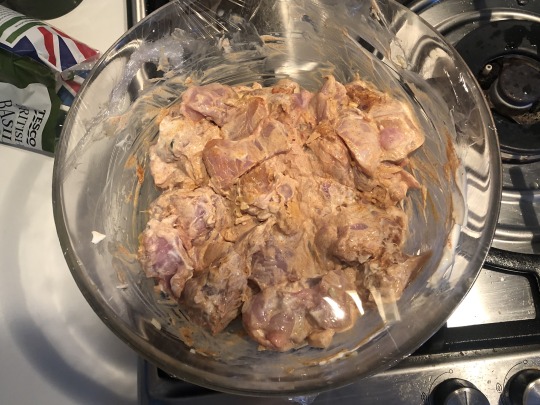
Heat the oven to 220C/ Gas 9. Spread the chicken pieces out in one layer on a large baking tray, leaving a margin on the side to say out the strips of red pepper, tossed in a tsp. olive oil. Cook for 15-20 mins, turning the pieces halfway through so that they cook evenly. Remove from the oven and set aside while you make the sauce.

Slice the tomatoes in half and put in a large saute pan with 125 ml water, grated ginger, garlic, cardamom, cloves and bay leaf. Simmer, covered for about 25 mins until the tomatoes are mushy (the aroma from this simmer will already be driving you wild with desire). Remove the whole spices, add the chilli powder and simmer for a further 10 mins (Vivek likes to push the tomatoes through a sieve and just use the resultant puree, but I prefer my sauce to be a bit more rugged, a little less refined).

Add the chicken pieces and the red pepper slices and all their juices and give it a good stir. Slowly stir in the butter, a couple of cubes at a time, and simmer for about 8 minutes until the chicken is cooked through. Add the chopped ginger, chillies and cream and simmer for a minute or two longer. Stir in 1 tsp.kosher salt, crumble in the fenugreek leaves and the garam masala. Adjust the seasoning if necessary then add the sugar.

In a separate small pan, warm up all the ingredients for the spiced butter until the seeds start to pop. At this stage you can serve the Butter Chicken with the spiced butter spooned over the top, but if progressing with the pie (which I urge you to do) , then set both the chicken and the spiced butter to one side.
Now make the pastry (you can also make this ahead and chill, just bring back to room temperature before rolling out). Combine the flour , salt and a generous grind of black pepper in a food processor. Add the butter and lard and blitz until it has the texture of fine breadcrumbs. In a separate bowl, mix the soured cream, vinegar and water then add to the flour and butter mix and just blitz until the mixture starts to come together (don’t overwork it). Turn out onto a floured surface and bring together into a smooth ball. Wrap in cling film then chill for at least 30 mins.
Heat the oven to 200C/ Gas 6. Brush the rim of your pie dish with the beaten egg, then fill the dish with the butter chicken and drizzle the spiced butter all over the surface. Roll out the pastry in a circle big enough to cover the pie dish, then lay over the top of the dish, crimping the edges to seal and trim off any surplus pastry to neaten the edges. Cut a small cross in the middle to let the steam out during cooking and make some pastry leaves with any pastry offcuts.
Brush all over with the rest of the egg glaze then pop in the fridge for 10 minutes.During that 10 minutes, make the lime pickle glaze by mixing the pickle with 2 tbsp. boiling water and the sugar. Set aside.

Bake the pie for 40 mins then brush all over with the lime pickle glaze and bake for 15 mins more. Serve garnished with the chilli (dipped in a little oil to make it glisten) and a few coriander leaves.

Mue’s Chai Latte Choc Chip Muffins (and some variations)

When I asked Mue for the recipe she had to quantify her instincts on ingredients, (and thanks for leaving out the eggs first time round missus) but the results were judged by those who ate them as ‘the best they have ever had’. I have slightly adjusted the recipe, using chai latte mix instead of masala chai and used my favourite buttermilk instead of sour cream. (makes 12 generous muffins)
Ingredients:
3.5 cups flour (about 350g) plain flour
3 tbsp. baking powder
1 tbsp chai latte powder
Pinch kosher salt
125g butter, melted
200g sugar
2 tbsp. Coconut oil, melted
2 tsp vanilla
2 cups buttermilk and maybe a tbsp of milk
2 eggs
1 50g packet of chocolate chips plus a few extra for serving
For the streusel topping:
20g plain flour
10g sugar
10g butter
1 tsp. Chai latte powder
How to make
Heat the oven to 220C/ Gas 7-8. Line a 12 cup muffin tin with muffin holders (I like the tulip-shaped ones in the photo).

In a large bowl, mix the flour, baking powder, sugar, chai latte powder and salt. In separate bowl mix the melted, cooled butter and coconut oil with the beaten eggs, Buttermilk, splash of milk (1 tbsp) and the vanilla paste. Pour the wet ingredients into the dry ingredients and mix with a wooden spoon until a thick, gloopy consistency. Add a little more milk if the mix is too stiff. You want it not quite falling off your spoon. Then fold in the chocolate chips.
In a third bowl, rub the butter into the flour until you have fine breadcrumbs then mix in the sugar and chai latte.

Fill the muffin cups evenly (about 2 tbsp. Mix per cup), then top with the streusel and pop in the oven, turning the heat down immediately to 180C/ Gas 5. Bake for 30 mins until a skewer comes out clean from the centre, then remove from the oven and dot each muffin with a few more chocolate chips cool and serve.
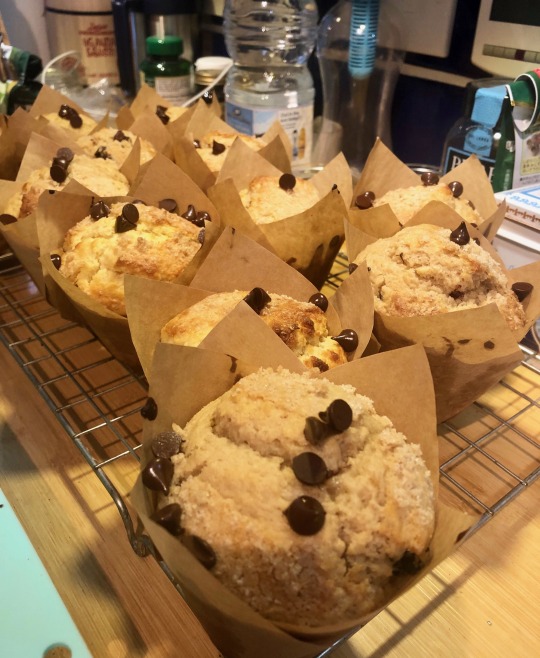
Variations
For Blueberry muffins, omit the chai latte powder and choc chips and stir in 3 oz fresh blueberries into the muffin mix. Bake as before.
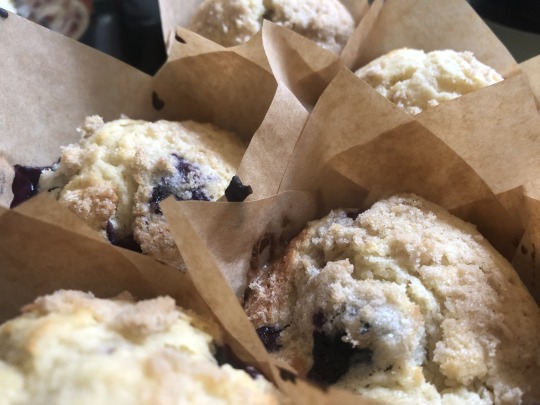
For Apple, Pecan and Golden Syrup muffins. Melt 2 tbsp golden syrup with the butter and coconut oil, then add all the wet ingredients to the dry ingredients as before. Fold in 1 grated apple and 50g coarsely chopped pecans into the muffin mix then bake as before. Dot each muffin with a few more chopped pecans when out of the oven and before they cool.

Mue and Cherie’s Ugly Green Juice
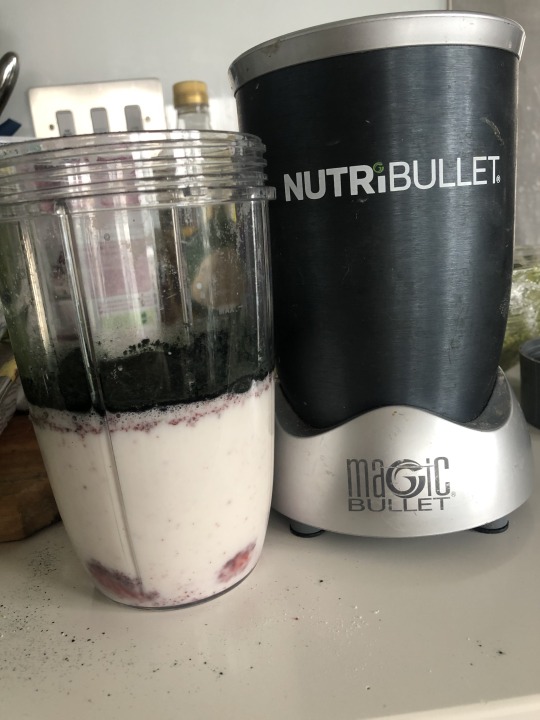
This is the colour of verdigris but tastes delightful. Just shut your eyes and drink (or colour match with your nail polish, like here).

Ingredients:
½ cup frozen strawberries
2 tsp acai berry powder or lingonberry powder
2 tsp Splenda or Stevia sweetener
4 tsp. Spirulina
1-2 Cups nut milk (try to get a nice think consistency, so start with 1 cup and add more to taste
How to Make
Put all your ingredients into a blender, blitz till smooth and serve.
It’s that simple.

3 notes
·
View notes
Photo

For lunch (from bottom left to top) : podlanga kootu (snake gourd veggie dish), spinach, chilled salad, beef gravy and on top the white rice is mochakottai salna (farm bean curry) - all homemade, all delicious and most things I don’t make so I can come savor it when I visit #chennai 😈😂 #travelerandtourist #chennaifoodie #lunchmenu #eatingfortheinsta #yummyinmytummy (at Chennai, India) https://www.instagram.com/p/CgREvbJvHcX/?igshid=NGJjMDIxMWI=
0 notes